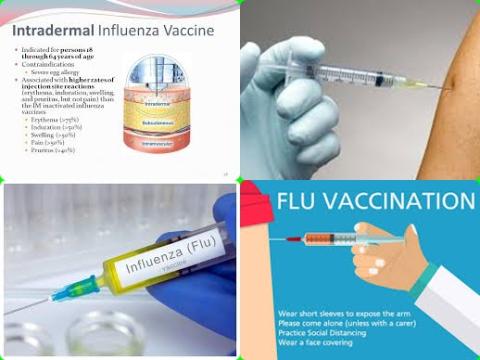
Objectives:
To compare the immunogenicity and safety of the influenza vaccine at reduced or full intradermal doses with full intramuscular doses to inform policy design in the event of vaccine shortages.
Study design:
This review article included a total of 29 RCTs with 13,759 participants and 1 cohort study with 164,021 participants.
Approximately half of the studies (14 studies) involved only participants aged 60 years or older or reported data for participants aged 60 years or older.
Results and conclusions:
The investigators found there was no statistically significant difference in seroconversion rates between the 3-µg, 6-µg, 7.5-µg and 9-µg intradermal vaccine doses and the 15-µg intramuscular vaccine dose for each of the H1N1, H3N2 and B strains.
However, the rates were significantly higher with the 15-µg intradermal dose compared with the 15-µg intramuscular dose for the H1N1 strain [rate ratio (RR) = 1.10, 95% CI = 1.01 to 1.20] and B strain [rate ratio = 1.40, 95% CI = 1.13 to 1.73].
The investigators found the seroprotection rates for the 9-µg and 15-µg intradermal doses did not vary significantly compared with the 15-µg intramuscular dose for all the 3 strains, except for the 15-µg intradermal dose for the H1N1 strain, for which rates were significantly higher [rate ratio = 1.05, 95% CI = 1.01 to 1.09].
The investigators found local adverse events were significantly higher with intradermal doses than with the 15-µg intramuscular dose, particularly erythema [3-µg dose: RR = 9.62, 95% CI = 1.07 to 86.56; 6-µg dose: RR = 23.79, 95% CI = 14.42 to 39.23; 9-µg dose: RR = 4.56, 95% CI = 3.05 to 6.82; 15-µg dose: RR = 3.68, 95% CI = 3.19 to 4.25] and swelling [3-µg dose: RR = 20.16, 95% CI = 4.68 to 86.82; 9-µg dose: RR = 5.23, 95% CI = 3.58 to 7.62; 15-µg dose: RR = 3.47, 95% CI = 2.21 to 5.45].
The investigators found fever and chills were significantly more common with the 9-µg intradermal dose than the 15-µg intramuscular dose [fever: RR = 1.36, 95% CI = 1.03 to 1.80; chills: RR = 1.24, 95% CI = 1.03 to 1.50] while all other systemic adverse events were not statistically significant for all other doses.
The investigators concluded that immunogenicity resulting from 3-µg, 6-µg, 7.5-µg and 9-µg influenza intradermal vaccination doses is not significantly different from full-dose 15-µg intramuscular vaccination for most viral strains, irrespective of patient age.
However, the 15-µg intradermal vaccine shows significantly better immunogenicity for some of the outcomes and strains, suggesting that the immunological response may be dose-related.
Original title:
Immunogenicity and Safety of Reduced-Dose Intradermal vs Intramuscular Influenza Vaccines: A Systematic Review and Meta-analysis by Egunsola O, Clement F, […], Noseworthy T.
Link:
https://jamanetwork.com/journals/jamanetworkopen/fullarticle/2776045
Additional information of El Mondo:
Find more information/studies on vaccination and food fortification/malnutrition right here.
Intradermal injection is a shallow or superficial injection of a substance into the dermis. The dermis or corium is a layer of skin between the epidermis and subcutaneous tissues,